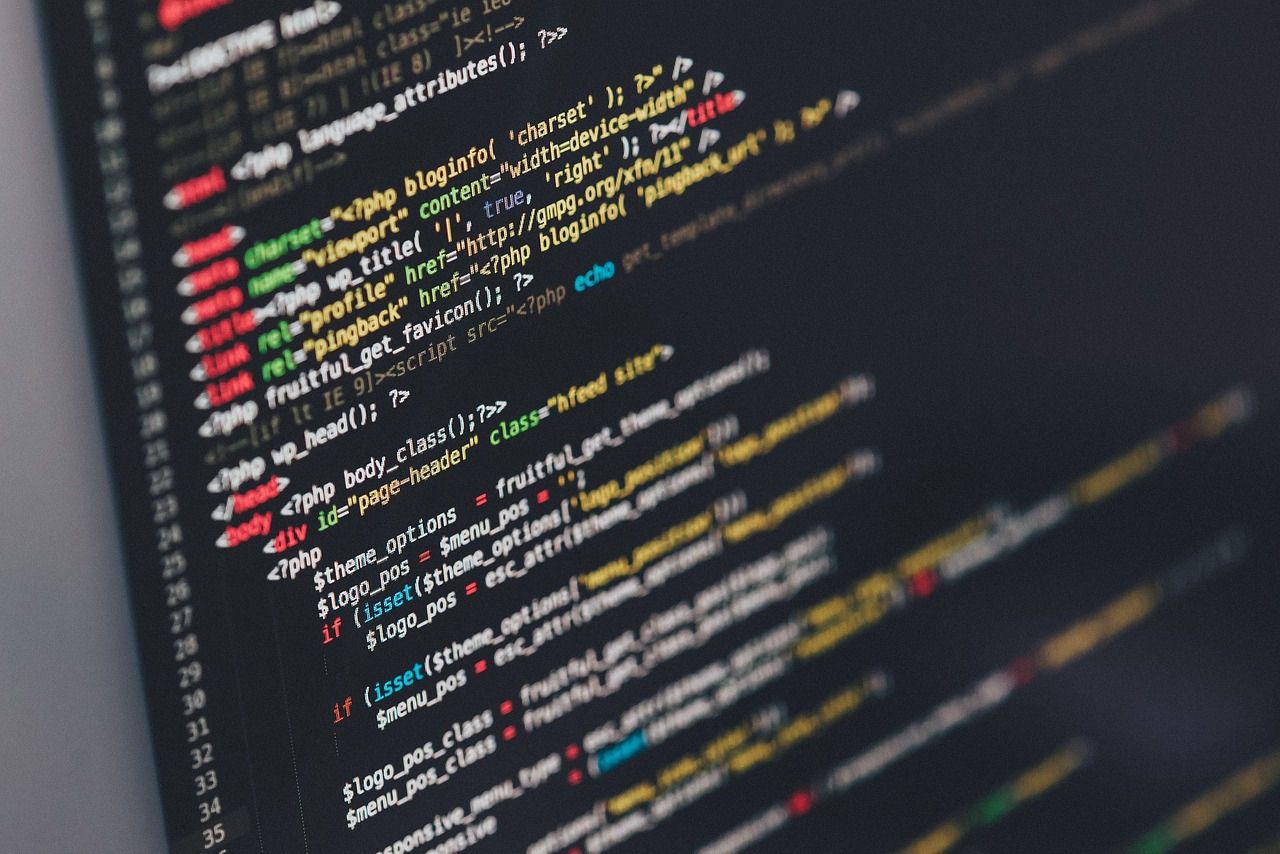How to Implement Blockchain Solutions in Your Organization
In today’s fast-paced digital world, organizations are constantly on the lookout for innovative technologies that can drive efficiency, enhance security, and foster transparency. One such revolutionary technology is blockchain. But how do you go about implementing blockchain solutions in your organization? This article will walk you through the essential steps and considerations, ensuring you’re well-equipped to navigate the complexities of this transformative technology.
Before diving into implementation, it’s crucial to grasp what blockchain technology really is. At its core, blockchain is a decentralized ledger system that allows for secure and transparent transactions. Imagine it as a digital notebook that everyone can see but no one can alter. Each entry, or block, is linked to the previous one, creating a chain that is both secure and immutable. This structure ensures that once data is recorded, it cannot be changed without consensus from all parties involved, making it a robust solution for various applications.
Now that you understand blockchain, the next step is to identify where it can be most beneficial in your organization. Evaluating potential use cases is essential for maximizing the technology’s value. Think about areas where transparency, security, and efficiency can be improved. Here are some sectors where blockchain can shine:
- Supply Chain Management
- Financial Services
- Healthcare
- Real Estate
Blockchain can revolutionize supply chain management by offering real-time tracking of products and materials. This means that every participant in the supply chain can access the same information, reducing discrepancies and enhancing trust. The use of immutable records also minimizes the risk of fraud, as every transaction is logged and can be audited at any time.
Traceability in supply chains is becoming increasingly important, especially with the rising consumer demand for product authenticity and ethical sourcing. Blockchain provides a solution by allowing all stakeholders to track the journey of a product from its origin to the end user. This level of transparency not only builds consumer trust but also helps businesses comply with regulations.
Implementing blockchain can lead to significant cost savings. By streamlining processes and reducing the need for intermediaries, organizations can cut down on operational costs. For instance, in a traditional supply chain, multiple parties (like brokers and warehouses) might be involved, each adding their own fees. Blockchain simplifies this by allowing direct transactions between parties, eliminating unnecessary costs.
In the financial sector, blockchain is making waves by facilitating faster transactions with lower fees. Traditional banking systems often involve multiple intermediaries, which can slow down the process and increase costs. With blockchain, transactions can be executed in real-time, significantly enhancing efficiency. Additionally, the technology offers enhanced security against fraud, making it a preferred choice for financial institutions.
Once you’ve identified potential use cases, the next step is to choose the right blockchain platform for your organization. Factors to consider include scalability, security, and community support. It’s essential to evaluate whether a public or private blockchain aligns better with your organizational goals.
Understanding the differences between public and private blockchains is crucial. Public blockchains, like Bitcoin, are open to anyone and offer complete transparency. In contrast, private blockchains are restricted to specific participants, offering more control and privacy. The choice depends on your organization’s needs and the level of transparency you wish to maintain.
Implementing blockchain solutions requires specific technical capabilities. You need to assess your existing infrastructure, integration capabilities, and development resources. This evaluation will help you identify any gaps and determine what additional resources or expertise you may need to successfully implement blockchain technology.
Having the right team in place is vital for the successful implementation of blockchain solutions. It’s not just about hiring new talent; it’s also about training your existing staff to understand and leverage blockchain technology effectively. A skilled team can navigate the complexities of implementation and ensure ongoing support.
Investing in training programs for your team can pay off significantly. Consider workshops, online courses, or partnering with educational institutions to upskill your workforce. A knowledgeable team will be better equipped to handle challenges and drive your blockchain project forward.
Sometimes, the best way to ensure success is to collaborate with experts. Partnering with blockchain consultants or firms that specialize in implementation can provide valuable insights and experience. They can help you navigate the intricacies of blockchain technology and tailor solutions that fit your organization’s unique needs.
As with any technology, understanding and adhering to regulatory requirements is crucial when implementing blockchain solutions. Compliance is essential to avoid legal pitfalls and ensure that your organization operates within the law.
Different industries have varying legal frameworks governing blockchain technology. It’s essential to familiarize yourself with these regulations and ensure that your blockchain implementation complies with them. This may involve consulting with legal experts to navigate the complexities of the law.
Data privacy is a significant concern when implementing blockchain solutions. While blockchain offers transparency, it’s vital to protect sensitive information. Strategies such as encryption and access controls can help maintain data privacy while still leveraging the benefits of blockchain technology.
Finally, once you’ve implemented blockchain solutions, it’s important to assess their success. Measuring return on investment (ROI) through key performance indicators (KPIs) will help you understand the effectiveness of your blockchain project. Setting clear objectives from the outset will provide a benchmark against which you can evaluate progress.
Establishing clear objectives and goals for your blockchain project is crucial. This will not only guide your implementation but also help you measure success over time. Consider what you hope to achieve—whether it’s cost savings, improved efficiency, or enhanced security—and use these goals to evaluate your project’s effectiveness.
Blockchain technology is constantly evolving, and so should your solutions. Ongoing assessment and adaptation are necessary to ensure that your blockchain implementation continues to meet organizational needs and market demands. Regularly revisiting your objectives and making necessary adjustments will help you stay ahead of the curve.
1. What is blockchain technology?
Blockchain is a decentralized ledger system that securely records transactions across multiple computers, ensuring transparency and preventing data alteration.
2. How can blockchain improve supply chain management?
Blockchain enhances supply chain management by providing real-time tracking, ensuring product authenticity, and reducing fraud through immutable records.
3. What are the differences between public and private blockchains?
Public blockchains are open to anyone and offer complete transparency, while private blockchains restrict access to specific participants, providing more control and privacy.
4. Why is regulatory compliance important in blockchain?
Understanding and adhering to regulatory requirements is crucial to avoid legal issues and ensure that blockchain implementations operate within the law.
5. How can I measure the success of my blockchain project?
Measuring success involves setting clear objectives and using key performance indicators (KPIs) to evaluate the effectiveness and return on investment (ROI) of your blockchain implementation.

Understanding Blockchain Technology
Blockchain technology is often described as a decentralized ledger that records transactions across multiple computers in a way that ensures the recorded transactions cannot be altered retroactively. This innovative technology is like a digital chain where each block contains a number of transactions, and once a block is filled, it is linked to the previous block, forming a secure and unchangeable chain. Imagine a public library where every book (block) is added sequentially, and each book holds information about transactions (data) that can't be rewritten or erased—this is the essence of blockchain.
The core principles of blockchain revolve around transparency, security, and efficiency. Each participant in the network has access to the entire database, which means that everyone can verify the information without relying on a central authority. This is akin to a community garden where every member can see what’s planted and how it’s maintained, fostering trust and collaboration. Furthermore, the use of cryptographic techniques ensures that the data is secure, making it nearly impossible for unauthorized users to tamper with the information.
At its core, blockchain operates on a few key components:
- Distributed Ledger: Unlike traditional databases controlled by a single entity, a blockchain is distributed across a network of computers (nodes), which enhances resilience and security.
- Consensus Mechanisms: These are protocols that consider a transaction as valid only when a certain number of participants agree, ensuring that all copies of the database are synchronized and accurate.
- Smart Contracts: These are self-executing contracts with the terms of the agreement directly written into code, allowing for automation and reducing the need for intermediaries.
The potential applications for blockchain technology are vast and varied. From financial services to supply chain management, the ability to create an immutable record of transactions can significantly enhance operational efficiencies. For instance, in the financial sector, blockchain can facilitate faster transactions and lower fees, while in supply chain management, it can provide real-time tracking of goods, ensuring authenticity and ethical sourcing.
As organizations begin to explore blockchain, it's essential to understand not only how it functions but also the transformative potential it holds. By implementing blockchain solutions, businesses can not only enhance their operational processes but also build a foundation of trust with their customers and stakeholders. The journey into blockchain technology is not just about adopting a new tool; it's about embracing a new way of thinking about how we manage and share information.

Identifying Business Use Cases
Identifying the right business use cases for blockchain technology is akin to finding the perfect puzzle pieces that fit seamlessly into your organization's operational framework. With the potential to enhance transparency, security, and efficiency, blockchain can be a game-changer; however, pinpointing where it can add the most value is crucial. To embark on this journey, consider a few key areas where blockchain can truly shine.
First, think about the processes within your organization that are currently bogged down by inefficiencies or lack of transparency. Are there areas where trust is a significant concern? For example, in industries like supply chain management, blockchain can provide a robust solution by offering a decentralized ledger that tracks products from origin to consumer, ensuring authenticity and ethical sourcing. This not only boosts transparency but also builds trust among stakeholders.
Next, evaluate how blockchain could streamline operations by reducing the need for intermediaries. In financial services, for instance, blockchain can facilitate faster transactions with lower fees. By eliminating the middlemen, organizations can save on costs and improve transaction times. Imagine a world where payments are settled in real-time, without the usual delays; that’s the power of blockchain!
Here are some specific use cases to consider:
- Supply Chain Management: Real-time tracking, enhanced transparency, and fraud reduction.
- Financial Services: Faster transactions, lower fees, and enhanced security.
- Healthcare: Secure patient records and improved data sharing among providers.
- Real Estate: Simplified property transactions and transparent ownership records.
When assessing potential use cases, it’s also essential to involve key stakeholders from various departments. This collaboration can uncover unique insights and identify specific pain points that blockchain could address. For instance, a marketing team might highlight the need for transparent advertising metrics, while the finance team could focus on improving transaction security. By gathering input from diverse perspectives, you can create a holistic view of where blockchain can fit into your organization.
Furthermore, consider conducting a pilot project. This approach allows you to test the waters without diving in headfirst. By implementing blockchain on a smaller scale, you can evaluate its effectiveness and gather data to support a broader rollout. A pilot can serve as a proof of concept, demonstrating the technology's potential and addressing any challenges before a full-scale implementation.
In conclusion, identifying the right business use cases for blockchain requires a thoughtful approach that considers operational inefficiencies, stakeholder input, and potential pilot projects. By taking these steps, your organization can harness the power of blockchain technology, transforming operations and paving the way for a more transparent and efficient future.
- What industries can benefit from blockchain technology? Many sectors, including supply chain management, finance, healthcare, and real estate, can leverage blockchain for improved efficiency and transparency.
- How do I know if blockchain is right for my organization? Assess your current processes for inefficiencies and areas where trust is lacking. If blockchain can address these issues, it might be a good fit.
- What is a pilot project in the context of blockchain? A pilot project involves implementing blockchain on a small scale to test its effectiveness before a full rollout.

Supply Chain Management
When it comes to , the stakes are incredibly high. Imagine a world where every product you purchase comes with a guarantee of authenticity, from farm to table or factory to storefront. This is the promise that blockchain technology holds for supply chains across various industries. By leveraging a decentralized ledger, organizations can achieve real-time tracking of goods, which not only enhances transparency but also significantly reduces the risk of fraud. Think of blockchain as a digital passport for products, ensuring that every step of their journey is recorded and verifiable.
One of the most compelling aspects of blockchain in supply chain management is its ability to provide traceability. With traditional systems, tracing a product back to its origin can be a cumbersome and often unreliable process. However, with blockchain, every transaction is recorded in an immutable ledger, making it easy to verify the authenticity and source of a product. This is especially crucial in industries like food and pharmaceuticals, where the integrity of the supply chain can directly impact consumer health and safety.
Furthermore, the cost implications of implementing blockchain in supply chain management are profound. By streamlining processes and eliminating the need for multiple intermediaries, organizations can significantly reduce operational costs. Instead of relying on a patchwork of systems and third-party verification, a unified blockchain solution can facilitate faster transactions and reduce administrative burdens. This not only leads to cost savings but also enhances overall efficiency.
To illustrate the impact of blockchain on supply chain management, consider the following table that highlights key benefits:
| Benefit | Description |
|---|---|
| Real-Time Tracking | Allows organizations to monitor the movement of goods at every stage of the supply chain. |
| Enhanced Transparency | Provides all stakeholders with access to the same information, reducing disputes and misunderstandings. |
| Fraud Reduction | Immutable records make it difficult for fraudulent activities to occur without detection. |
| Cost Reduction | Minimizes the need for intermediaries, leading to lower transaction fees and operational costs. |
In conclusion, the integration of blockchain technology into supply chain management is not just a trend; it's a transformative approach that can redefine how businesses operate. By enhancing traceability, transparency, and efficiency, organizations can not only improve their bottom line but also build trust with consumers. As we move forward, understanding and embracing this technology will be crucial for any organization looking to stay competitive in an increasingly complex market.
- What are the main benefits of using blockchain in supply chain management?
Blockchain provides real-time tracking, enhanced transparency, fraud reduction, and cost savings. - How does blockchain ensure product authenticity?
By recording every transaction in an immutable ledger, blockchain allows for easy verification of a product's origin and journey. - Is blockchain technology expensive to implement?
While there are initial costs associated with implementation, the long-term savings from reduced intermediaries and streamlined processes often outweigh these costs.

Traceability and Transparency
In today's fast-paced world, the demand for traceability and transparency in supply chains has never been higher. Consumers are becoming increasingly savvy, wanting to know not just where their products come from, but also how they were made. This is where blockchain technology steps in like a superhero ready to save the day. By utilizing a decentralized ledger, organizations can create an unchangeable record of every transaction and movement of goods throughout the supply chain. Imagine being able to trace a product back to its origin with just a few clicks! This level of transparency not only builds trust with consumers but also enhances brand reputation.
Blockchain provides a way to ensure product authenticity and ethical sourcing. For instance, if a company claims that their coffee is sourced from fair-trade farms, blockchain can verify this claim by documenting each step of the supply chain. This means that every batch of coffee can be traced back to the exact farm it came from, providing consumers with peace of mind and confidence in their purchase. The transparency offered by blockchain can help organizations mitigate risks associated with fraud and counterfeiting, which are rampant in many industries today.
To further illustrate the impact of blockchain on traceability and transparency, consider the following key aspects:
- Immutable Records: Once data is entered into a blockchain, it cannot be altered or deleted, ensuring that the history of a product's journey is secure and trustworthy.
- Real-Time Tracking: Organizations can monitor products as they move through the supply chain, allowing for quick responses to any issues that arise.
- Consumer Engagement: By offering access to detailed product histories, companies can engage consumers in a meaningful way, enhancing loyalty and satisfaction.
Moreover, the implications of enhanced traceability go beyond consumer trust; they also play a crucial role in compliance with regulations. Many industries, such as food and pharmaceuticals, have strict regulations regarding the tracking of products. Blockchain can simplify compliance by providing a clear, auditable trail of every product's journey. This not only saves time and resources but also reduces the risk of penalties for non-compliance.
In conclusion, the integration of blockchain technology into supply chain management can significantly improve traceability and transparency. As organizations strive to meet consumer demands and regulatory requirements, embracing this technology is not just a trend; it's a necessity for staying competitive in the market. By fostering trust and accountability, blockchain is paving the way for a more transparent future.
- What is blockchain? Blockchain is a decentralized digital ledger that records transactions across multiple computers securely and transparently.
- How does blockchain enhance traceability? Blockchain creates an immutable record of each transaction, allowing products to be traced back to their origins easily.
- Can blockchain help with compliance? Yes, blockchain provides a clear audit trail, making it easier for organizations to comply with industry regulations.
- Is blockchain technology expensive to implement? While there may be initial costs, the long-term savings from improved efficiency and reduced fraud can outweigh these expenses.

Cost Reduction
When it comes to implementing blockchain solutions, one of the most compelling arguments for organizations is the potential for . Imagine a world where transactions are faster, intermediaries are eliminated, and operational inefficiencies are a thing of the past. This is not just a dream; it’s the reality that blockchain technology can create. By streamlining processes and enhancing transparency, blockchain can significantly lower costs across various business functions.
First off, let’s talk about the elimination of intermediaries. Traditional processes often require multiple middlemen, each taking a cut of the profits. For instance, in financial transactions, banks and payment processors can add hefty fees that eat into your bottom line. With blockchain, you can transact directly with your customers or suppliers, thereby reducing or even eliminating these costs. This direct interaction not only saves money but also speeds up the transaction process.
Moreover, blockchain provides an immutable record of all transactions, which reduces the risk of fraud and errors. When data is stored on a blockchain, it’s virtually tamper-proof. This reliability means less time and money spent on audits and corrections. According to a study by the World Economic Forum, companies could save up to 30% in administrative costs through enhanced transparency and reduced fraud. Just think about the resources you could redirect towards innovation and growth instead of dealing with discrepancies!
Another significant area of cost reduction is in supply chain management. By employing blockchain technology, organizations can gain real-time visibility into their supply chains. This transparency allows for better inventory management, reducing excess stock and minimizing storage costs. For example, if a company can track its goods from production to delivery, it can optimize its inventory levels and reduce carrying costs.
Here’s a quick breakdown of how blockchain can lead to cost savings:
| Cost Reduction Area | Potential Savings |
|---|---|
| Elimination of Intermediaries | Up to 30% in transaction fees |
| Reduced Fraud and Errors | 30% in administrative costs |
| Optimized Inventory Management | 20-50% in storage costs |
In addition to these savings, blockchain can also facilitate smart contracts, which automatically execute agreements when predetermined conditions are met. This automation reduces the need for legal intervention and speeds up processes, further cutting costs. Imagine the savings when you don’t have to pay lawyers to draft and enforce contracts manually!
In conclusion, the cost reduction potential of blockchain technology is not just a theoretical benefit; it’s a transformative opportunity for organizations willing to embrace this innovation. From eliminating unnecessary intermediaries to enhancing operational efficiencies, the financial advantages are clear. As more businesses recognize these benefits, the adoption of blockchain will likely accelerate, reshaping industries and redefining cost structures.
1. How does blockchain reduce transaction costs?
Blockchain eliminates the need for intermediaries, allowing for direct transactions between parties, which can significantly lower fees.
2. Can blockchain help in reducing fraud?
Yes, blockchain provides an immutable record of transactions, making it much harder to alter or commit fraud, thus saving costs associated with audits and corrections.
3. What are smart contracts?
Smart contracts are self-executing contracts with the terms of the agreement directly written into code, which can automate processes and reduce legal costs.
4. What industries can benefit from blockchain cost reduction?
Industries such as finance, supply chain management, healthcare, and real estate can all see significant cost reductions through the implementation of blockchain technology.

Financial Services
In the rapidly evolving world of , blockchain technology is making waves, transforming traditional systems into more efficient and secure alternatives. Imagine a world where transactions are not only faster but also safer, reducing the risk of fraud and errors. This is the promise of blockchain in finance. By leveraging a decentralized ledger, financial institutions can process transactions in real-time, eliminating the bottlenecks often associated with traditional banking systems.
One of the most significant advantages of blockchain in the financial sector is its ability to facilitate faster transactions. Traditional banking systems can take days to process cross-border payments, leading to delays and frustrations for customers. With blockchain, these transactions can be completed in a matter of minutes, if not seconds. This speed is not just a convenience; it can also lead to significant cost savings for both banks and their clients. Furthermore, the reduction in transaction times allows businesses to operate more efficiently, improving cash flow and enabling quicker decision-making.
Another critical benefit is the reduction of fees. Traditional financial transactions often incur various fees, including transfer fees, currency conversion charges, and intermediary costs. Blockchain technology can help minimize these expenses by streamlining the transaction process and reducing the need for intermediaries. For instance, peer-to-peer transactions can be executed directly on the blockchain, eliminating the need for banks or payment processors. This not only lowers costs but also empowers individuals and businesses to manage their finances more effectively.
Security is another paramount concern in the financial industry, and blockchain addresses this issue head-on. With its robust encryption and decentralized nature, blockchain offers enhanced security against fraud. Each transaction is recorded in a way that makes it nearly impossible to alter or erase, creating an immutable record that can be audited at any time. This transparency builds trust between parties and can significantly reduce the risk of fraud, a persistent issue in traditional financial systems.
To illustrate the impact of blockchain on financial services, consider the following table that outlines key benefits:
| Benefit | Description |
|---|---|
| Faster Transactions | Real-time processing of transactions, reducing wait times from days to minutes. |
| Lower Fees | Minimized transaction costs by eliminating intermediaries. |
| Enhanced Security | Immutable records and robust encryption protect against fraud. |
In summary, the integration of blockchain technology into financial services is not just a trend; it represents a fundamental shift in how we think about money and transactions. By enhancing speed, reducing costs, and improving security, blockchain is paving the way for a more efficient financial ecosystem. As organizations begin to embrace these innovations, the potential for growth and transformation in the financial sector is immense.
- What is blockchain technology? Blockchain is a decentralized digital ledger that records transactions across many computers in a way that the registered transactions cannot be altered retroactively.
- How does blockchain enhance security in financial services? Blockchain uses cryptography to secure transactions and create an immutable record, making it nearly impossible for fraud to occur.
- Can blockchain reduce transaction costs? Yes, by eliminating intermediaries, blockchain can significantly lower transaction fees in financial services.
- How fast are transactions on blockchain? Transactions can be processed in minutes, compared to days with traditional banking systems.

Choosing the Right Blockchain Platform
When it comes to integrating blockchain technology into your organization, one of the most critical decisions you'll face is . With numerous options available, each offering unique features and capabilities, it can feel overwhelming. However, by understanding your organizational needs and the specific characteristics of various platforms, you can make an informed choice that aligns with your strategic goals.
First and foremost, consider the core requirements of your organization. Are you looking for a platform that prioritizes scalability to handle a growing number of transactions? Or perhaps you need a solution with enhanced security features to protect sensitive data? By identifying these priorities, you can narrow down your options significantly. For instance, if your organization operates in a highly regulated industry, security and compliance features will be non-negotiable.
Another essential factor to consider is the community support surrounding the blockchain platform. A robust community can provide invaluable resources, from troubleshooting to development support. Platforms like Ethereum and Hyperledger have large communities, which means you can tap into a wealth of knowledge and experience. In contrast, a newer or less popular platform may lack the same level of support, making it more challenging to resolve issues or find skilled developers.
Moreover, you should evaluate the differences between public and private blockchains. Public blockchains, such as Bitcoin and Ethereum, are open to anyone and offer greater transparency. However, they may not be suitable for organizations that require privacy and control over their data. On the other hand, private blockchains are permissioned networks, allowing only authorized participants to access the information. This can enhance security but may limit the level of transparency.
To help visualize these differences, consider the following table:
| Feature | Public Blockchain | Private Blockchain |
|---|---|---|
| Access | Open to everyone | Restricted to authorized users |
| Transparency | High | Limited |
| Security | Decentralized, but can be vulnerable to attacks | More control, but requires trust in the network |
| Use Cases | Cryptocurrencies, public records | Enterprise solutions, supply chain |
Additionally, evaluating the technical requirements necessary for implementing the blockchain solution is crucial. This includes understanding the infrastructure needed, integration capabilities with existing systems, and the development resources available. Do you have in-house developers who are familiar with the platform, or will you need to hire new talent? These considerations can significantly impact both the initial implementation and the long-term maintenance of the blockchain solution.
Ultimately, the key to choosing the right blockchain platform lies in aligning your organizational goals with the platform's capabilities. Take the time to conduct thorough research, consult with experts, and even pilot different solutions before making a final decision. By doing so, you can ensure that your investment in blockchain technology will yield the desired benefits, enhancing your organization's efficiency, transparency, and security.
- What is the main difference between public and private blockchains? Public blockchains are open to everyone, while private blockchains restrict access to authorized users only.
- How do I assess the scalability of a blockchain platform? Look for platforms that can handle increasing transaction volumes without compromising performance.
- Is community support important when choosing a blockchain platform? Yes, a strong community can provide valuable resources and support, making implementation and troubleshooting easier.

Public vs. Private Blockchains
When diving into the world of blockchain technology, one of the first decisions you’ll face is whether to opt for a public or private blockchain. Understanding the differences between these two types is crucial for aligning your blockchain strategy with your organization's goals. Public blockchains, like Bitcoin and Ethereum, are open to anyone. They allow anyone to join, validate transactions, and participate in the network. This openness promotes a high level of security and decentralization, making it nearly impossible for any single entity to control the entire network. Imagine a bustling marketplace where everyone can sell, buy, and even trade ideas without a gatekeeper—this is the essence of public blockchains.
On the flip side, we have private blockchains, which are more like exclusive clubs. Access is restricted to certain users or organizations, and only authorized participants can validate transactions. This setup enhances privacy and can lead to faster transaction speeds, as there are fewer nodes involved in the consensus process. For businesses that prioritize confidentiality, such as financial institutions, private blockchains can be a more appealing option. Think of it as a VIP lounge where only select guests can enter and enjoy the benefits without the noise of the general crowd.
So, how do you decide which one is right for your organization? Here are some key factors to consider:
- Transparency vs. Privacy: Public blockchains excel in transparency, while private ones offer enhanced privacy.
- Control: If you want more control over the network, a private blockchain is likely your best bet.
- Security: Public blockchains are generally more secure due to their decentralized nature, but private blockchains can implement strict security measures as well.
- Use Case: Consider your specific use case; different applications may require different types of blockchains.
Ultimately, the choice between a public and private blockchain will depend on your organization’s specific needs and goals. For instance, if your focus is on creating a decentralized application that requires broad participation, a public blockchain might be the way to go. However, if you're looking to streamline internal processes with a focus on security and privacy, a private blockchain could be more suitable.
In conclusion, both public and private blockchains have their unique advantages and challenges. It’s essential to weigh these factors carefully and consider how they align with your organizational objectives. As you navigate this exciting landscape, remember that the right choice can set the foundation for successful blockchain implementation.
1. What is the main difference between public and private blockchains?
Public blockchains are open to everyone and promote decentralization, while private blockchains restrict access to authorized users, offering more privacy and control.
2. Can a private blockchain be as secure as a public blockchain?
While public blockchains benefit from decentralization, private blockchains can implement strict security protocols to ensure data integrity and confidentiality.
3. Which type of blockchain is better for businesses?
It depends on the business's needs. If transparency and decentralization are priorities, a public blockchain is better; if privacy and control are more critical, then a private blockchain is ideal.
4. Are there hybrid blockchains?
Yes, hybrid blockchains combine elements of both public and private blockchains, allowing organizations to enjoy the benefits of both worlds.

Evaluating Technical Requirements
When it comes to implementing blockchain solutions, understanding and evaluating the technical requirements is crucial. Think of this phase as laying the foundation for a sturdy building; without a solid base, everything else is at risk. First and foremost, you need to assess your existing infrastructure. Is your current hardware capable of supporting the demands of a blockchain network? This includes considerations such as processing power, storage capacity, and network bandwidth. If your infrastructure is outdated, it might be time for an upgrade to accommodate the new technology.
Next, consider the integration capabilities of your current systems. Blockchain is not a standalone solution; it needs to work seamlessly with your existing software and databases. This means evaluating APIs and other integration tools that can facilitate communication between blockchain and your traditional systems. Are your current systems flexible enough to adapt to blockchain technology? If not, you may need to invest in new software or middleware solutions to bridge the gap.
Another key aspect to evaluate is the development capabilities within your organization. Do you have a team of developers who are well-versed in blockchain technology? If your team lacks the necessary skills, you might face challenges during the implementation process. Consider the following when assessing your development capabilities:
- Skill Set: Are your developers familiar with blockchain programming languages like Solidity or Hyperledger Fabric?
- Experience: Have they worked on previous blockchain projects?
- Training Needs: Will your team require additional training to get up to speed?
Moreover, it's essential to evaluate the security requirements of your blockchain implementation. Blockchain technology is often praised for its security features, but it is not immune to vulnerabilities. You must ensure that your team understands the best practices for securing blockchain networks, including encryption, access controls, and regular audits. This will not only protect your organization from potential threats but also build trust among your stakeholders.
Lastly, consider the scalability of the chosen blockchain solution. As your organization grows, your blockchain needs may evolve. Will the platform you choose be able to handle increased transaction volumes and data storage requirements? Evaluating scalability upfront can save you from future headaches and costly migrations.
In summary, evaluating the technical requirements for implementing blockchain solutions is a multifaceted process that involves assessing infrastructure, integration capabilities, development skills, security measures, and scalability. By taking the time to thoroughly evaluate these aspects, you can ensure a smoother implementation process and set your organization up for success in the blockchain arena.
Q1: What are the key technical requirements for implementing blockchain?
A1: Key requirements include robust infrastructure, integration capabilities with existing systems, skilled developers, security measures, and scalability considerations.
Q2: How can I assess my current infrastructure for blockchain?
A2: Evaluate your hardware's processing power, storage capacity, and network bandwidth to determine if it can support blockchain technology.
Q3: Is it necessary to have blockchain developers in-house?
A3: While it's beneficial to have in-house expertise, you can also consider hiring external consultants or firms specializing in blockchain development.
Q4: What security measures should I implement for blockchain?
A4: Implement encryption, access controls, and regular audits to secure your blockchain network from potential vulnerabilities.
Q5: How do I ensure scalability in my blockchain solution?
A5: Choose a blockchain platform that is designed to handle increased transaction volumes and data as your organization grows.

Building a Skilled Team
In the rapidly evolving world of blockchain technology, having a skilled team is crucial for successful implementation and ongoing support. Think of your team as the backbone of your blockchain project; without the right expertise, even the most innovative ideas can falter. So, how do you go about assembling a group of talented individuals who can navigate the complexities of blockchain? It starts with understanding the specific skills and knowledge required in this domain.
First and foremost, consider the various roles needed in your blockchain team. You’ll need developers who are proficient in blockchain programming languages, project managers who can keep everything on track, and business analysts who can bridge the gap between technology and business needs. Each role plays a vital part in ensuring that your blockchain initiatives align with your organizational goals.
Moreover, training and development should be a priority. This doesn’t just mean hiring new talent; it also involves upskilling your existing employees. Offering training programs and workshops can help your team stay updated with the latest advancements in blockchain technology. For instance, you might consider creating a structured training program that includes:
- Online courses on blockchain fundamentals
- Hands-on workshops to practice coding smart contracts
- Seminars featuring industry experts discussing real-world applications
In addition to internal training, collaborating with external experts can significantly enhance your team's capabilities. Partnering with blockchain consultants or firms that specialize in implementation can provide invaluable insights and accelerate your learning curve. These experts can guide you through the intricacies of blockchain technology, helping your team avoid common pitfalls and leverage best practices. It’s like having a seasoned captain at the helm of a ship navigating through stormy seas.
Finally, fostering a culture of continuous learning is essential in the fast-paced tech landscape. Encourage your team to attend conferences, participate in webinars, and engage with online communities. This not only enhances their skills but also helps them stay connected with the latest trends and innovations in blockchain technology.
In summary, building a skilled team for blockchain implementation requires a multifaceted approach. By identifying the necessary roles, investing in training, collaborating with experts, and promoting a culture of continuous learning, you can create a powerhouse team ready to tackle the challenges of blockchain technology. Remember, the success of your blockchain initiatives largely depends on the expertise and commitment of your team.
Q1: What skills should I look for when building a blockchain team?
A1: Look for skills in blockchain programming, project management, business analysis, and an understanding of cryptography and distributed systems.
Q2: How can I train my existing employees in blockchain technology?
A2: You can provide online courses, hands-on workshops, and opportunities to attend industry conferences to help them gain new skills.
Q3: Is it necessary to hire external consultants for blockchain projects?
A3: While it's not mandatory, partnering with external consultants can provide valuable expertise and help streamline your implementation process.
Q4: How can I ensure my team stays updated with blockchain trends?
A4: Encourage participation in webinars, online communities, and continuous education programs to keep your team informed about the latest developments.

Training and Development
In the rapidly evolving landscape of technology, particularly with the advent of blockchain, have become crucial for organizations aiming to remain competitive. As blockchain technology continues to transform industries, the need for a workforce equipped with the right skills is more important than ever. But how do you ensure that your team is ready to embrace this change? It starts with a clear strategy for training and development.
First and foremost, organizations should assess the current skill levels of their employees. This involves conducting a thorough skills gap analysis to identify what knowledge is lacking in relation to blockchain technology. Once you've pinpointed these gaps, you can tailor your training programs to meet those specific needs. For instance, if your team is familiar with traditional databases but lacks understanding of decentralized systems, you might focus on fundamental blockchain concepts and their applications.
Moreover, training should not be a one-time event but rather an ongoing process. Consider implementing a continuous learning culture within your organization. This can be achieved through various methods, including:
- Workshops and Seminars: Regularly scheduled workshops can provide hands-on experience and real-time problem-solving scenarios, enhancing the learning experience for employees.
- Online Courses and Certifications: Encourage team members to enroll in reputable online courses that offer certifications in blockchain technology. This not only boosts their confidence but also adds value to your organization.
- Internal Knowledge Sharing: Foster an environment where employees can share insights and knowledge gained from external training with their colleagues. This can be done through lunch-and-learn sessions or internal webinars.
Furthermore, hiring new talent with specialized blockchain skills can complement your existing workforce. Look for individuals who not only possess technical expertise but also demonstrate a passion for innovation and problem-solving. This blend of seasoned professionals and fresh talent can create a dynamic team capable of tackling the challenges of blockchain implementation.
Lastly, it’s essential to measure the effectiveness of your training initiatives. This can be done through feedback surveys, performance assessments, and tracking the team’s ability to apply their new skills in real-world scenarios. By continuously evaluating the impact of training and development, organizations can make necessary adjustments to their programs, ensuring that they remain relevant and effective.
Q1: What is the best way to start training my team on blockchain technology?
A1: Start with a skills gap analysis to understand what your team knows and what they need to learn. Then, develop a tailored training program that includes workshops, online courses, and internal knowledge sharing.
Q2: How can I ensure that the training is effective?
A2: Measure the effectiveness of your training through feedback surveys and performance assessments. Regularly evaluate how well employees are applying their new skills in practical scenarios.
Q3: Should I hire new talent or train existing employees?
A3: A combination of both is often the best approach. While training your existing employees can upskill your workforce, bringing in new talent with specialized skills can provide fresh perspectives and expertise.

Collaborating with Experts
When diving into the complex world of blockchain technology, the importance of cannot be overstated. Imagine trying to navigate a vast ocean without a map or compass; that's what implementing blockchain can feel like without the right guidance. Experts bring a wealth of knowledge and experience, helping organizations avoid common pitfalls and streamline the implementation process.
One of the key benefits of working with blockchain consultants is their ability to provide tailored solutions that fit your organization's unique needs. They can assess your current processes and identify areas where blockchain can add the most value. This tailored approach not only saves time but also ensures that the technology is integrated seamlessly into your existing systems.
Moreover, experts can help in training your team to understand and effectively use blockchain technology. This is crucial because, while the technology itself is revolutionary, its success largely depends on the people who operate it. By investing in training, organizations empower their staff to leverage blockchain's capabilities fully, fostering a culture of innovation and adaptability.
In addition, collaborating with experts allows organizations to stay updated with the latest trends and developments in the blockchain space. The landscape is constantly evolving, and having a knowledgeable partner means you won’t be left behind. These experts often have access to a network of other professionals and resources, providing insights that can lead to more informed decision-making.
Furthermore, consider the potential for long-term partnerships. Engaging with a blockchain consultancy can lead to ongoing collaboration, where experts can provide continual support as your organization grows and evolves. This relationship can be invaluable, especially as new challenges and opportunities arise in the blockchain realm.
In summary, collaborating with experts is not just about seeking help; it’s about forging a partnership that enhances your organization’s capabilities. Whether it’s through tailored solutions, team training, or staying ahead of industry trends, the right expert can make a significant difference in your blockchain journey.
- What should I look for in a blockchain consultant? Look for experience in your industry, a proven track record of successful implementations, and a strong understanding of the technology.
- How can I ensure my team is ready for blockchain technology? Invest in training programs and workshops that focus on blockchain fundamentals and practical applications.
- What are the risks of not collaborating with experts? Without expert guidance, organizations may face implementation challenges, legal issues, and missed opportunities for optimization.

Ensuring Regulatory Compliance
In the world of blockchain, regulatory compliance is not just a checkbox to tick; it’s a critical foundation for building trust and credibility. As organizations dive headfirst into integrating blockchain solutions, they must navigate a complex web of legal requirements that vary by industry and region. Ignoring these regulations can lead to serious legal repercussions, including hefty fines and damage to reputation. So, how can organizations ensure they’re on the right side of the law?
First, it’s essential to understand that blockchain technology operates in a unique space where traditional regulations may not always apply. This is where navigating legal frameworks becomes crucial. Organizations should conduct thorough research to identify the specific laws and regulations that govern blockchain technology in their sector. This includes understanding how data is stored, shared, and protected on the blockchain. For instance, industries like finance and healthcare have stringent regulations regarding data privacy and security that must be adhered to.
Moreover, data privacy considerations are paramount in the realm of blockchain. While blockchain is celebrated for its transparency, it also raises significant concerns about the handling of sensitive information. Organizations must develop strategies to protect this data while maintaining compliance with regulations such as the General Data Protection Regulation (GDPR) in Europe or the Health Insurance Portability and Accountability Act (HIPAA) in the U.S. This often means implementing robust encryption methods and ensuring that any personally identifiable information (PII) is adequately safeguarded.
To effectively manage these compliance challenges, organizations can benefit from creating a regulatory compliance checklist. This checklist should include:
- Identification of relevant regulations
- Assessment of current practices against regulatory requirements
- Implementation of necessary changes to blockchain solutions
- Regular audits to ensure ongoing compliance
In addition, collaborating with legal experts who specialize in blockchain can prove invaluable. These professionals can provide insights into the evolving regulatory landscape and help organizations stay compliant as laws change. Furthermore, engaging with industry groups and forums can also offer guidance and best practices for navigating the complexities of blockchain compliance.
Ultimately, ensuring regulatory compliance is not just about avoiding penalties; it’s about fostering a culture of responsibility and trust. As organizations embrace blockchain technology, they must prioritize compliance to protect their interests and those of their stakeholders. By doing so, they can leverage the full potential of blockchain while minimizing risks and enhancing their reputation in the marketplace.
Q1: What are the main regulatory concerns with blockchain technology?
A1: The main regulatory concerns include data privacy, security, and compliance with existing financial regulations, which can vary significantly by jurisdiction.
Q2: How can organizations ensure they are compliant with data privacy laws?
A2: Organizations can ensure compliance by conducting thorough research on applicable laws, implementing robust data protection measures, and regularly auditing their practices.
Q3: Should organizations hire legal experts for blockchain compliance?
A3: Yes, hiring legal experts can provide valuable insights into the regulatory landscape and help organizations navigate compliance challenges effectively.

Navigating Legal Frameworks
Navigating the complex landscape of legal frameworks surrounding blockchain technology is crucial for any organization looking to implement this innovative solution. As blockchain continues to evolve, so too do the regulations that govern its use. Understanding these regulations is not just a matter of compliance; it's about ensuring your organization operates within the law while leveraging the full potential of blockchain. This can feel like trying to read a map in a foreign language—daunting, right? But fear not! With the right approach, you can make sense of it all.
First and foremost, it’s essential to recognize that the legal landscape varies significantly across different jurisdictions. What may be permissible in one country could be entirely illegal in another. For instance, some countries have embraced blockchain and cryptocurrency, providing clear guidelines, while others have imposed strict bans or heavy regulations. Therefore, your organization must conduct thorough research to understand the legal environment specific to your operational regions. This involves not only reviewing local laws but also keeping an eye on international regulations that might impact your business.
Moreover, organizations must consider various legal aspects, including contract law, intellectual property rights, and data protection regulations. For example, when smart contracts are utilized, they must comply with existing contract laws to be enforceable. Similarly, if your blockchain solution involves handling personal data, you need to ensure compliance with data protection laws like the General Data Protection Regulation (GDPR) in Europe. Ignoring these legal requirements can lead to severe penalties and damage to your organization’s reputation.
To further illustrate the importance of navigating legal frameworks, let’s consider a few key areas of focus:
- Regulatory Bodies: Identify the regulatory bodies that oversee blockchain technology in your industry. This could include financial authorities, data protection agencies, and trade commissions.
- Compliance Requirements: Understand the specific compliance requirements that apply to your organization. This may include reporting obligations, licensing requirements, and consumer protection laws.
- Legal Counsel: Engaging with legal experts who specialize in blockchain technology can provide invaluable insights and help navigate the complexities of the law.
In addition to understanding the legal requirements, organizations should also stay informed about ongoing legislative changes. The world of blockchain is dynamic, and regulations are often updated to keep pace with technological advancements. Establishing a system for monitoring these changes is vital. This could involve subscribing to industry newsletters, attending relevant conferences, or even participating in blockchain advocacy groups. By staying ahead of the curve, your organization can adapt swiftly to new regulations and minimize the risk of non-compliance.
Finally, it’s important to foster a culture of compliance within your organization. Training your staff on legal obligations and best practices related to blockchain can go a long way in ensuring adherence to regulations. This not only protects your organization from legal pitfalls but also builds trust with your customers and stakeholders. After all, when it comes to blockchain, transparency and trust are paramount.
In conclusion, navigating the legal frameworks surrounding blockchain technology may seem like a daunting task, but with careful planning and proactive measures, your organization can successfully integrate blockchain solutions while remaining compliant with the law. Remember, the key is to stay informed, seek expert guidance, and foster a culture of compliance within your team.
- What are the main legal challenges associated with blockchain? Legal challenges include compliance with data protection laws, contract enforceability, and intellectual property rights.
- How can I ensure my organization stays compliant with blockchain regulations? Regularly monitor legal updates, engage legal experts, and train your staff on compliance practices.
- Are there specific industries more affected by blockchain regulations? Yes, industries like finance, healthcare, and supply chain management face more stringent regulations due to the sensitive nature of their data.

Data Privacy Considerations
When diving into the world of blockchain, one of the most critical aspects to consider is data privacy. Yes, blockchain is known for its transparency and security, but this doesn't mean that your sensitive data is automatically protected. In fact, the very nature of blockchain—being a public and immutable ledger—can pose challenges when it comes to safeguarding personal information. So, how do we navigate this paradox?
First and foremost, it’s essential to understand that while blockchain offers a robust framework for data integrity, it does not inherently provide privacy. This is where privacy-enhancing technologies come into play. Solutions such as zero-knowledge proofs or ring signatures can help ensure that while transactions are verifiable, the identities involved remain confidential. Imagine you’re at a party: you want to show your friends your new dance moves, but you don’t want everyone at the party to know your life story. This analogy perfectly illustrates how blockchain can validate transactions without revealing every detail.
Furthermore, organizations must be aware of the various regulatory frameworks governing data privacy. For instance, in the European Union, the General Data Protection Regulation (GDPR) imposes strict rules on how personal data should be collected, processed, and stored. Non-compliance can lead to hefty fines and reputational damage. Therefore, it’s crucial to integrate compliance measures into your blockchain strategy right from the outset. This involves conducting a thorough risk assessment to identify potential vulnerabilities and implementing necessary safeguards to protect user data.
Another important consideration is the data retention policy. Unlike traditional databases where you can easily delete or modify records, blockchain's immutable nature means once data is written, it cannot be changed or erased. This raises questions about how long personal data should be stored and whether it is even necessary to keep it on the blockchain at all. Organizations should evaluate whether they can utilize off-chain storage for sensitive information while keeping only essential data on the blockchain.
Lastly, fostering a culture of data privacy within your organization is paramount. This means not only training your team on the importance of data protection but also establishing clear policies regarding data handling and access. Regular audits and assessments can help ensure that your blockchain implementation remains compliant with evolving regulations and best practices.
- What are the main data privacy concerns with blockchain? Blockchain's transparency can expose sensitive information unless privacy measures are implemented.
- How can organizations ensure compliance with data privacy regulations? By integrating compliance measures into their blockchain strategy and conducting regular audits.
- What technologies can enhance data privacy in blockchain? Technologies such as zero-knowledge proofs and ring signatures can help maintain confidentiality.
- Is it possible to delete data on a blockchain? No, once data is added to a blockchain, it cannot be deleted or altered.

Measuring Success and ROI
Measuring the success of your blockchain implementation is crucial for understanding its impact on your organization. Just like any significant investment, you want to ensure that the resources you’ve allocated are yielding the desired results. But how do you quantify success in a realm as complex and innovative as blockchain? It all comes down to establishing clear objectives and key performance indicators (KPIs) that align with your business goals.
First and foremost, setting clear objectives is essential. What do you hope to achieve with blockchain technology? Are you aiming for increased efficiency, reduced costs, or improved transparency? By defining these goals upfront, you can create a roadmap to guide your implementation and evaluation process. For instance, if your primary objective is to enhance supply chain transparency, you might focus on metrics like the reduction in fraud incidents or the time taken to trace a product's origin.
Once your objectives are clear, you can identify the KPIs that will help you measure success. These KPIs should be specific, measurable, achievable, relevant, and time-bound (SMART). Here are some examples of KPIs you might consider:
- Transaction speed: Measure the time taken for transactions to be processed on the blockchain.
- Cost savings: Calculate the reduction in operational costs attributed to the elimination of intermediaries.
- User adoption rates: Track how many employees or partners are actively using the blockchain solution.
- Error rates: Monitor the frequency of errors or discrepancies in the blockchain records compared to previous systems.
To truly grasp the return on investment (ROI) of your blockchain project, it’s vital to conduct a thorough analysis. This analysis should include both quantitative and qualitative data. For example, while you can easily calculate cost savings, understanding the qualitative benefits—such as enhanced customer trust or improved supplier relationships—can be more subjective. This is where continuous improvement comes into play. Regularly assess the effectiveness of your blockchain solutions and adapt them as necessary to meet evolving organizational needs and market demands.
Finally, consider creating a success measurement framework that allows you to visualize and track your progress. A simple table can help organize your objectives, KPIs, and results, providing a clear overview of how well your blockchain implementation is performing:
| Objective | Key Performance Indicator (KPI) | Current Status | Target |
|---|---|---|---|
| Increase Efficiency | Transaction Speed | 5 seconds | 2 seconds |
| Reduce Costs | Cost Savings | $50,000/year | $100,000/year |
| Enhance Transparency | Error Rates | 3% | 1% |
By regularly updating this table and reviewing your KPIs, you can maintain a clear focus on your goals and ensure that your blockchain initiatives are on track to deliver the anticipated benefits. Remember, measuring success is not a one-time task but an ongoing process that requires diligence and adaptation.
Q: How often should I measure the success of my blockchain implementation?
A: It's best to measure success regularly, such as quarterly or bi-annually, to ensure that you stay aligned with your objectives and can make necessary adjustments.
Q: What if my KPIs are not meeting expectations?
A: If your KPIs are falling short, it may be time to reassess your objectives, review your implementation strategy, or seek expert advice to identify areas for improvement.
Q: Can qualitative benefits be measured effectively?
A: While qualitative benefits can be more subjective, conducting surveys or gathering feedback from stakeholders can provide valuable insights into areas like customer trust and satisfaction.

Setting Clear Objectives
When it comes to implementing blockchain solutions, one of the most crucial steps is . Think of it as laying the foundation for a house; without a solid base, everything built on top can crumble. So, what does it mean to set clear objectives in the context of blockchain? Essentially, it involves defining what you want to achieve with this transformative technology. Are you looking to enhance transparency, streamline processes, or perhaps reduce costs? Each of these goals requires a tailored approach.
To start, it’s essential to engage with key stakeholders across your organization. This could involve brainstorming sessions or workshops where everyone can voice their insights. By gathering a diverse range of perspectives, you can identify the most pressing challenges your organization faces and how blockchain can address them. For instance, if supply chain inefficiencies are a concern, your objective might focus on improving traceability and reducing fraud.
Once you have a list of potential objectives, it’s important to prioritize them. Not all goals are created equal, and some may have a more significant impact on your business than others. Consider using the SMART criteria—Specific, Measurable, Achievable, Relevant, and Time-bound—to refine your objectives. This framework helps ensure that your goals are not only ambitious but also realistic and quantifiable.
Here’s a quick breakdown of what each element of SMART entails:
| Criteria | Description |
|---|---|
| Specific | Your objective should be clear and specific, answering the questions: What do we want to accomplish? Why is this objective important? |
| Measurable | Establish criteria for measuring progress and success. How will you know when you have achieved your objective? |
| Achievable | Ensure that your goal is attainable and not overly ambitious. Is it possible to achieve this objective with the resources available? |
| Relevant | Your objective should align with broader business goals. Does this objective matter to your organization? |
| Time-bound | Set a deadline for achieving your objective. When do you expect to see results? |
After refining your objectives using the SMART criteria, it’s time to communicate these goals effectively across your organization. Everyone involved in the blockchain initiative should understand the objectives and their roles in achieving them. This alignment not only fosters collaboration but also ensures that efforts are directed toward common goals.
Finally, remember that setting clear objectives is not a one-time task. As your organization evolves and the market landscape changes, you may need to revisit and adjust your objectives. Keeping an agile mindset will enable you to adapt to new challenges and opportunities that arise, ensuring that your blockchain implementation remains relevant and effective.
- What are the benefits of setting clear objectives for blockchain implementation? Setting clear objectives helps align your team, measure success, and ensure that resources are allocated effectively.
- How often should I review my blockchain objectives? It's advisable to review your objectives at least quarterly or whenever there are significant changes in your business environment.
- Can objectives change during the implementation process? Yes, objectives can and should evolve based on feedback, results, and changing market conditions.

Continuous Improvement
In the fast-paced world of technology, especially with something as dynamic as blockchain, is not just a luxury; it's a necessity. Think of it like a garden: if you want your plants to thrive, you can't just water them once and walk away. You need to regularly check on them, prune when necessary, and adapt to changing weather conditions. Similarly, your blockchain solutions require ongoing evaluation and enhancement to keep them aligned with your organization's goals and the ever-evolving market landscape.
One of the first steps in fostering a culture of continuous improvement is to establish a robust feedback loop. This means not only gathering data on how your blockchain implementation is performing but also actively seeking input from all stakeholders involved. Engaging with employees, customers, and partners can provide invaluable insights into what’s working and what isn’t. For example, you might discover that users find certain features cumbersome or that there are unexpected bottlenecks in your processes. By addressing these issues promptly, you can enhance the user experience and overall efficiency.
Moreover, leveraging key performance indicators (KPIs) is crucial in measuring success and identifying opportunities for improvement. Some common KPIs for blockchain projects include:
- Transaction Speed: How quickly transactions are processed.
- Cost Efficiency: The savings achieved through reduced need for intermediaries.
- User Adoption Rate: The percentage of users actively engaging with the blockchain system.
- System Downtime: Measuring the reliability of your blockchain solution.
By regularly reviewing these metrics, organizations can pinpoint trends and areas needing attention. For instance, if transaction speeds are lagging, it might be time to explore optimizations or even consider upgrading your blockchain platform. Remember, the goal is to ensure that your blockchain solution is not just functional but also adaptable to future challenges and opportunities.
Another important aspect of continuous improvement is staying informed about the latest advancements in blockchain technology. The landscape is constantly shifting, with new protocols and tools emerging that can enhance your existing systems. By investing time in research and development, attending industry conferences, or subscribing to relevant publications, your organization can remain at the forefront of innovation. This proactive approach can lead to exciting new features or capabilities that set your organization apart from competitors.
Finally, fostering a culture of innovation within your team is essential. Encourage your team members to think creatively and propose new ideas for utilizing blockchain technology. Host brainstorming sessions, provide training on emerging trends, and recognize contributions that lead to improvements. When employees feel empowered to innovate, they are more likely to identify and implement enhancements that drive your blockchain initiatives forward.
In summary, continuous improvement in blockchain implementation is about creating a cycle of feedback, measurement, and adaptation. By actively engaging with stakeholders, utilizing KPIs, staying updated on technological advancements, and fostering a culture of innovation, your organization can ensure that its blockchain solutions remain relevant, efficient, and effective in meeting both current and future challenges.
Q: Why is continuous improvement important for blockchain solutions?
A: Continuous improvement ensures that your blockchain solutions remain effective, efficient, and relevant in a rapidly changing technological landscape. It helps organizations adapt to new challenges and seize opportunities as they arise.
Q: How can we gather feedback for continuous improvement?
A: Organizations can gather feedback through surveys, interviews, and regular meetings with stakeholders, including employees, customers, and partners. This input is critical for understanding user experiences and identifying areas for enhancement.
Q: What are some key performance indicators for blockchain projects?
A: Common KPIs include transaction speed, cost efficiency, user adoption rate, and system downtime. Monitoring these metrics helps organizations assess the performance of their blockchain solutions.
Q: How can we foster a culture of innovation in our team?
A: Encourage creative thinking, provide training on new technologies, recognize innovative contributions, and host brainstorming sessions. Empowering team members to propose new ideas can lead to significant improvements in blockchain initiatives.
Frequently Asked Questions
- What is blockchain technology?
Blockchain technology is a decentralized digital ledger that securely records transactions across multiple computers. This ensures that the recorded transactions cannot be altered retroactively, promoting transparency and security in various applications.
- How can blockchain improve supply chain management?
Blockchain enhances supply chain management by providing real-time tracking of products, ensuring traceability and transparency. It allows all parties involved to access immutable records, which helps reduce fraud and verify product authenticity.
- What are the differences between public and private blockchains?
Public blockchains are open to anyone and are decentralized, while private blockchains are restricted to specific users and are often managed by a single entity. The choice between them depends on your organization’s needs for privacy, control, and scalability.
- How do I choose the right blockchain platform for my organization?
When selecting a blockchain platform, consider factors such as scalability, security, community support, and the specific use cases you want to address. It’s crucial to evaluate the technical requirements and ensure they align with your organizational goals.
- What skills are necessary for implementing blockchain solutions?
Implementing blockchain solutions requires a skilled team with expertise in blockchain technology, programming, and cybersecurity. Training existing staff and hiring new talent with these skills is essential for successful implementation and ongoing support.
- How can I ensure compliance with regulations when using blockchain?
To ensure regulatory compliance, it’s important to understand the legal frameworks governing blockchain in your industry. This includes being aware of data privacy laws and other regulations that may affect your blockchain implementation.
- What metrics can I use to measure the success of my blockchain project?
You can measure the success of your blockchain project by setting clear objectives and tracking key performance indicators (KPIs) such as cost savings, transaction speed, and user satisfaction. Continuous assessment and adaptation are also vital for ongoing success.
- Why is data privacy important in blockchain implementations?
Data privacy is crucial in blockchain implementations because sensitive information must be protected while maintaining transparency. Implementing strategies to secure data can help build trust with users and comply with legal requirements.



















